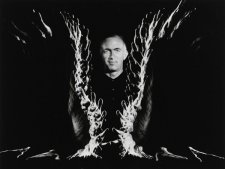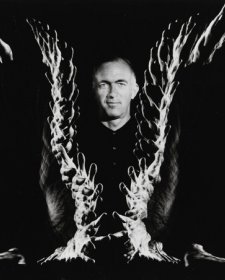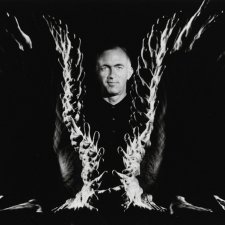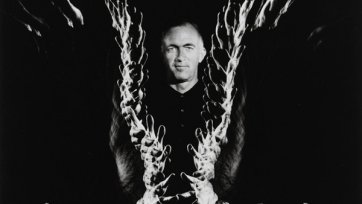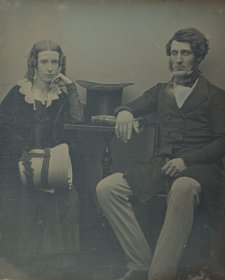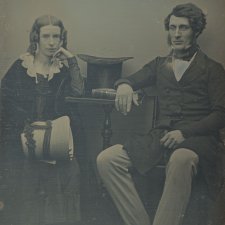In March 2004, the National Portrait Gallery Board unanimously agreed to acquire an image of the Danish architect Jørn Utzon for inclusion in the collection.
Jørn Utzon AC is renowned throughout the world for designing the Sydney Opera House and had long been on the 'wish' list for the collection. But it took the international network of the portrait galleries and the generosity of the Circle of Friends to make the acquisition happen.
Utzon was born in 1918 and trained at the Academy of Arts in Copenhagen, where his first building of note was his own home, completed in 1952. Just four years later, at the age of 38, he won the competition to build the Sydney Opera House, prevailing over 233 submissions from more than 30 countries.
Though universally admired today, the Sydney Opera House was designed and built amid controversy. Utzon's problems began almost immediately after he arrived in Australia in 1963, when the footings for the House were poured before engineers had determined how the sails were to be built, and the number of halls required increased from two to four. Throughout his three years on site Utzon was hounded for detailed plans and timelines, and the new government under Premier Robert Askin quibbled at his choice of suppliers as soon as they assumed office. The cost, initially estimated at $7 million, skyrocketed to $101 million by the project's end, and construction time blew out from an initial estimate of five years to fourteen. Utzon left Australia in 1966, vowing never to return, after the Minister of Public Works stopped paying him. The Opera House was finished with interiors totally different from his conception in 1973. Frank Gehry, architect of another of the world's most distinctive buildings, the Guggenheim Museum at Bilbao, emphasises that 'Utzon had to fight for that structure, for it was ahead of its time, far ahead of available technology. He had no computers. He persevered through extraordinary malicious publicity and negative criticism to create a building that changed the image of an entire country.' Utzon has never seen the completed masterpiece that contributed to his receiving architecture's highest international honour, the Pritzker Prize, in 2003. Pritzker Prize jury chair, Lord Rothschild, announced: 'Jørn Utzon created one of the great iconic buildings of the 20th century, an image of great beauty known throughout the world.'
Utzon was awarded an Honorary Companion of the Order of Australia in 1985. In 1999, after 33 years of estrangement from the House, he and his architect son Jan were appointed 'consultants' to ensure that any future changes to the building would accord with his design principles.
Despite his tremendous international stature, there are very few portrait images of Utzon. Ms Tove Thage, chief curator of the NPG's sister institution, the Frederiksborg Castle in Denmark, admitted that even they had trouble obtaining an image of Utzon in his native country. For 10 years they had tried to persuade Utzon to have his portrait painted, to no avail. In May 2000, however, Danish-born photographer Ole Haupt (b. 1946) aware of Frederiksborg's dilemma, made arrangements to visit the somewhat reclusive architect in Mallorca unannounced. Happily, Utzon admitted him in to his hillside house 'Can Feliz', and allowed Haupt an hour to try to capture the shot he so badly needed. The resulting delicate, yet frank image of Utzon set against the soft grey wall of his house, renders the man's gentle nature, his determination, and his refined architectural sensibility.
This is the first time the Circle of Friends has sponsored an acquisition of a work to the collection. Our Friends have secured for the nation a rare image of an 'outsider' who had the vision to create an Australian icon.

